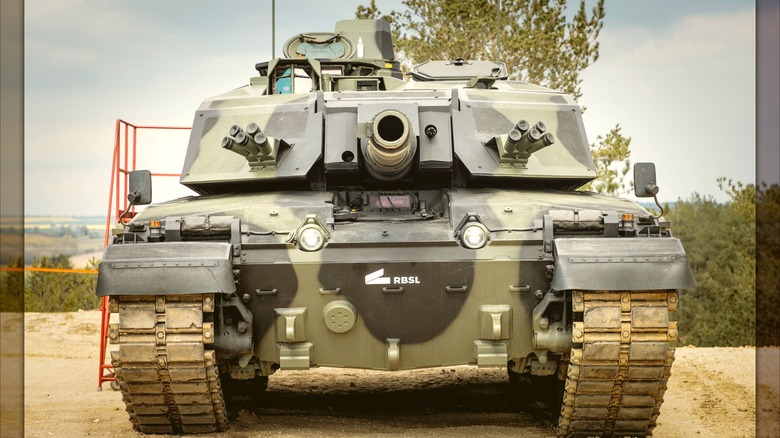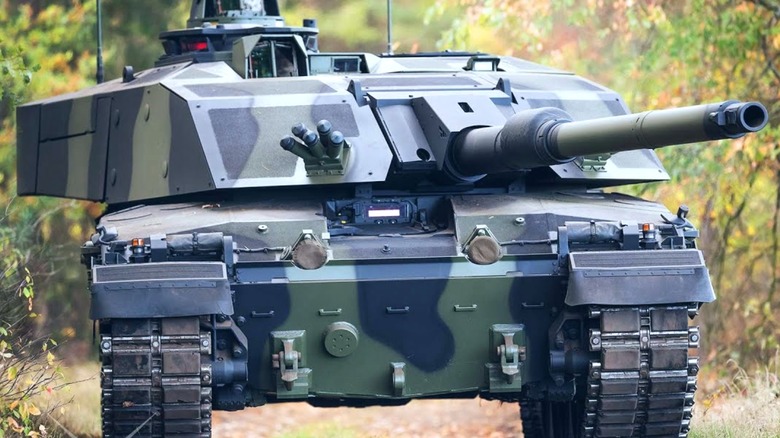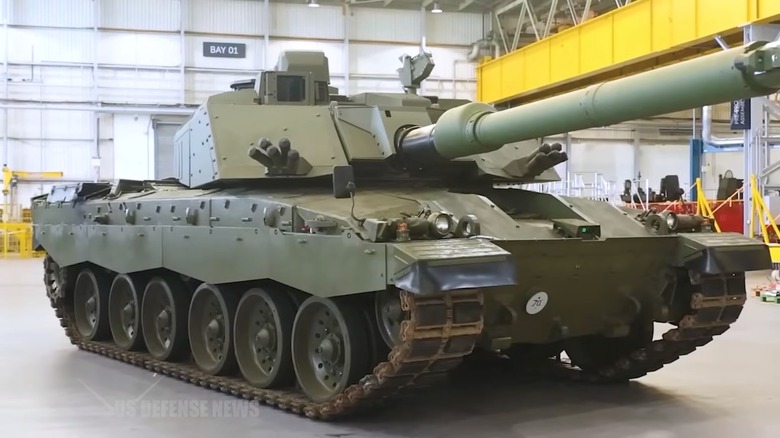Britain's New Challenger 3 Is Looking Like The Tank Of The Future
Britain has been using the Challenger 2 main battle tank (MBT) since it was first introduced in the 1990s. Plans to upgrade the U.K.'s fleet of MBTs in the early 2000s, but issues arose, and the tanks didn't begin the Life Extension Program (LEP) until 2014. Eventually, the program evolved into an entirely new tank design called Challenger 3. The Army began the process of upgrading its existing fleet of Challenger 2s to Challenger 3s in 2021.
While the Challenger 2 is an excellent tank, it is limited by its relatively ancient technology, and the Challenger 3 is the solution. Once converted, the result will be an entirely new tank built on the foundation of the existing tanks used by the British Army. It will take some time for the Challenger 3 to find its way out of manufacture and onto the world's battlefields. Should everything proceed as planned, the British Army will begin receiving Challenger 3 MBTs in 2025.
The first batch of Challenger 2 tanks began the upgrade process to the Challenger 3 in September 2023. The Royal Tank Regiment will receive the first batch in 2025. In total, 148 tanks will go through the process. That's more than half the current fleet of 213 Challenger 2 tanks. As the program continues, modifications from testing will result in improvements to the design, and should the British Parliament approve more, the next batch will incorporate the lessons learned from the first.
[Featured image by Ministry of Defense via Wikimedia Commons | Cropped and scaled | OGL v1.0]
The Challenger 3 MBT is a 21st-Century Tank
While it may seem that upgrading the existing U.K. Challenger 2 tank fleet into Challenger 3s isn't extensive, that would be incorrect. The Challenger 3 program is a major overhaul of the tank, so it's a detailed upgrade, ditching older systems for newer, digital networked devices. The upgrade begins with the hull, which is improved with more advanced modular armor that utilizes external EPROM armor and internal Farnham armor. Additionally, the external armor will include Rafael Advanced Defense Systems Ltd's Trophy Active Protection System (APS).
Another major overhaul involves the turret, which is an entirely new design that incorporates the German 120 mm High-Pressure L55A1 gun. This weapon system can fire Enhanced Kinetic Energy anti-tank rounds as well as programmable multi-purpose ammunition. The new gun cannot fire the depleted uranium (DU) ammo currently fired by the Challenger 2, so the U.K. began the process of developing an entirely new ammunition for its new MBT main gun.
In line with the new turret, both the long-range commander and gunner primary sights are being improved with new technology that will aid in target detection and acquisition. Additional improvements include an upgraded engine with enhanced cooling. Rheinmetall BAE Systems Land (RBSL) touts the new networked, digital, and electrical architecture that improves on everything from communications to target acquisition and imaging. All of these improvements and enhancements all but guarantee that the Challenger 3 is the tank of the future.
The Challenger 3 is already making headlines
Despite being in production, the Challenger 3 has already broken an important record and achieved a significant milestone. In May 2024, the British Ministry of Defense conducted a live-fire test of the Challenger 3's new main gun, and it was impressive, to say the least.
The Challenger 3 fired its Rheinmetall 120mm L55A1 high-pressure gun with the latest 120mm DM73 ammo, and it hit a target 5,000 meters (16,404 feet, or 3.1 miles) away. Not only was this a significant achievement and a display of the new tank's primary weapon, but the Challenger 3 is the first tank that's reached a 5,000-meter engagement, so it's a pretty big deal. For comparison, the M1A2 Abrams MBT used by the U.S. Army has a maximum effective range of 3,000 meters (9,842 feet, or 1.86 miles).
The Challenger 3 modernization program is the most significant program the U.K. has undertaken in a generation. Bringing the Challenger 2 from the 20th century into the 21st requires a great deal of updating, but RBSL has taken up the charge. The upgraded sights, armor, weapon systems, ammunition, and electronics improve the tank's survivability and lethality, ensuring the Challenger 3 rolls into the 21st-century battlefield capable of taking on numerous threats while protecting the four tankers inside.


